Introduction: The Lens and the Algorithm
Exploring the future of photography in the age of artificial intelligence begins by summarizing the benefits and controversies. Then I will expand on each one and hopefully provide an accurate account of my research into this exciting and scary new world.
In the vast realm of technological progress, only a handful of innovations have garnered as much anticipation and conjecture as artificial intelligence (AI). Its boundless possibilities have infiltrated numerous sectors holding the potential to reshape our labor, ingenuity and even our perception of the world.
Today, I embark on an exploration of the enthralling intersection where AI converges with the realm of photography. I will delve into its profound impact and address the enduring query of whether AI will supplant the role of photographers.
Unlocking New Dimensions of Creativity
AI has emerged as a formidable force, transcending boundaries and empowering industries with its unparalleled capabilities. In the domain of photography, AI has acted as a catalyst for both professionals and enthusiasts. It is initiating a revolutionary era of creative expression. By leveraging advanced algorithms and machine learning, AI has enabled photographers to push the boundaries of their craft. Consequently unveiling uncharted possibilities and delivering breathtaking results.
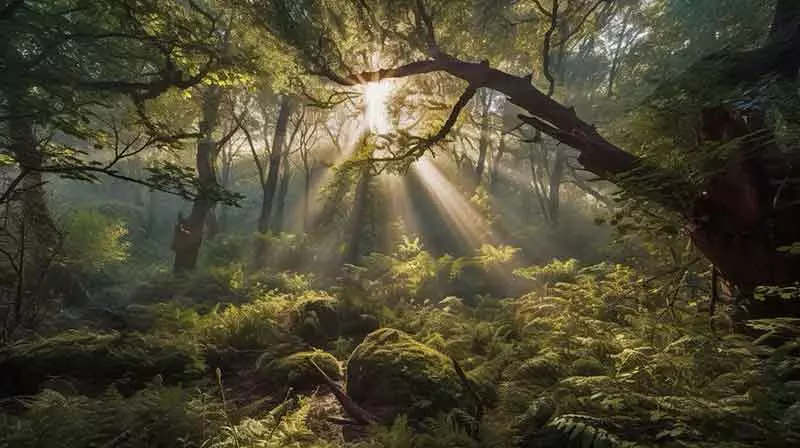
Capturing the Essence of Moments
Photography as an art form, revolves around capturing the essence of moments. Immortalizing them in frames that evoke emotions and tell stories. AI has now joined the ranks of skilled photographers, offering cutting edge tools that enhance the entire creative process. From intelligent auto adjustments to impeccable scene recognition, AI algorithms have the power to analyze and optimize images, making every shot a masterpiece. This marriage of human creativity and AI driven precision has given birth to a new breed of visual narration.
Streamlining Workflows and Efficiency
Stepping outside the boundaries of artistic endeavors, AI has proven to be an invaluable asset in streamlining workflows and enhancing efficiency. The laborious and time consuming tasks that once burdened photographers, are now accomplished swiftly and seamlessly through AI powered solutions. Examples of these tasks are sorting, organizing and post processing vast quantities of images. By automating these mundane tasks, photographers can redirect their focus and energy towards their true passion. Which is capturing captivating visuals that resonate with their audience.
The Human Touch: A Priceless Essence
While AI has undoubtedly transformed the world of photography, the question of whether it will replace photographers entirely remains significant. Beyond technical prowess, photography captures intangible elements experienced by human senses. It is the unique perspective, emotions and creative vision that photographers bring to the table. Making their work truly distinctive and evocative. AI may augment their abilities, but it can never fully replicate the depth and intricacy of human interpretation.
Embracing a Symbiotic Future
Instead of acting like adversaries, AI and photographers can establish a mutually beneficial alliance. As AI continues to evolve and mature, it will act as an invaluable tool for photographers. Consequently empowering photographers to transcend limitations and explore uncharted territories. When using the power of AI, photographers can unlock their full creative potential. Allowing them to push the boundaries of their artistry and leave an indelible mark on the world.
Conclusion For The Lens And The Algorithm
The rise of artificial intelligence has brought a paradigm shift to the world of photography. Opening a myriad of unprecedented opportunities and redefining the creative landscape. AI’s transformative impact, though profound, cannot replace the soul and imagination of photographers. As the journey continues, let us embrace the marriage of human artistry and AI’s extraordinary capabilities. Forging a future where the boundaries of photography continually expand and untapped horizons of visual narrative reveal themselves.
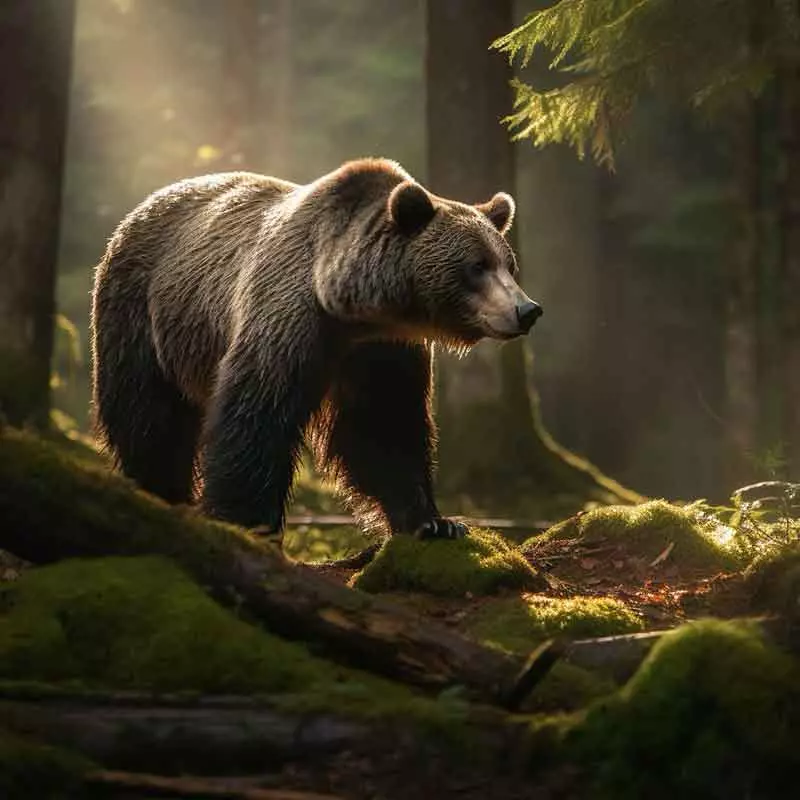
Understanding Artificial Intelligence in Photography
Definition and Scope of AI in Photography
AI combines machine learning algorithms and computer vision techniques. It captures, processes and analyzes digital images. Using advanced computational photography models to automate and enhance the photographic workflow. Enabling photographers and enthusiasts to achieve results with increased efficiency and creativity.
The scope of AI in photography is wide and encompasses several key areas. AI utilizes image recognition, enabling the automatic identification and categorization of objects, scenes and faces within a photograph. This has numerous applications, like automated tagging, content based image retrieval and organizing large image databases. AI algorithms analyze images to detect and recognize patterns, textures and shapes. Which aid in tasks like image segmentation and object tracking.
Additionally, AI plays a crucial role in image analysis. By leveraging deep learning techniques, AI models analyze and interpret visual data to extract meaningful information. For example, AI can be used to analyze medical images for disease detection. It evaluates the quality of images in industries like manufacturing or agriculture. And it assists in surveillance and security applications.
Furthermore, AI in photography extends to the world of image enhancement and editing. AI powered photo editing tools utilize algorithms trained on vast amounts of data to automatically adjust various image parameters. Parameters like exposure, color balance and composition and more. These tools intelligently enhance details, remove noise and even simulate artistic styles. As a result, giving photographers greater control over the final aesthetics of their images.
AI in photography has a profound impact on both professional photographers and enthusiasts. It enables them to streamline their workflow, save time and achieve quality results. The ability of AI algorithms to learn and adapt from vast datasets ensures the tools accuracy and sophistication over time. Thereby expanding the boundaries of achievements in photography.
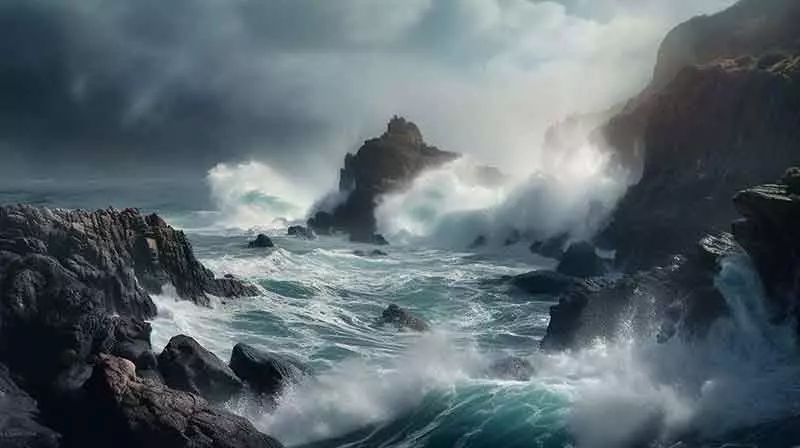
Evolution Of AI In Image Recognition And Analysis
AI’s image recognition and analysis evolution is a major milestone in computer vision. It’s had a profound impact on various industries, including photography. Over the years, AI has advanced image recognition capabilities from basic pattern detection to complex object identification and scene understanding.
Initially, image recognition algorithms used handcrafted features and traditional machine learning methods. However, with deep learning’s emergence, convolutional neural networks (CNNs) transformed image recognition. These neural networks automatically learn hierarchical representations of visual data. Enabling them to detect and classify objects with remarkable accuracy.
Large annotated datasets like ImageNet were crucial for training deep learning models in image recognition. The use of GPU computing accelerated the training process. Training deep neural networks on vast amounts of data. As a result, the accuracy of image recognition systems improved significantly.
The evolution of AI in image recognition witnessed advancements in object detection and localization. Instead of only identifying objects, AI algorithms precisely locate and outline multiple objects within an image. Techniques like region based CNNs and single shot detectors made real time object detection possible. Enabling applications like autonomous vehicles, surveillance systems and augmented reality.
Furthermore, AI expanded its scope to semantic understanding and scene analysis. The advent of semantic segmentation models, labels images at the pixel level. Allowing for fine grained analysis of object boundaries and relationships. AI powered systems interpret images in a contextual manner. Hence, understanding the relationships between different objects and inferring the overall scene semantics.
AI’s advancements in image recognition and analysis enabled diverse applications in photography. From automated image organization to content retrieval and everything in between. AI powered systems make it easier to search, categorize and manage large collections of photographs. AI algorithms assist in image forensics, facial recognition and medical imaging. This leads to precise diagnoses and personalized treatment plans.
AI Powered Photo Editing Tools
Editing tools incorporating AI revolutionized the way photographers enhance and transform their images. Offering a wide range of intelligent features and capabilities. These tools harness AI and machine learning algorithms to automate and optimize photo editing tasks.
A key area where AI made a significant impact is automatic image enhancement. AI algorithms analyze an image and make intelligent adjustments to enhance quality. This includes optimizing exposure, contrast, color balance and saturation levels. By understanding patterns and features in thousands of edited images, AI editing tools apply adjustments resulting in visually appealing, well balanced photos.
Noise reduction is another area where AI shines. Noisy images, like those taken in low light conditions, are challenging to handle. AI algorithms learn from vast datasets of noisy and clean images to reduce noise in low resolution images. They employ advanced denoising techniques that improve image quality.
AI photo editing tools like Photoshop offer sophisticated object removal and content aware filling capabilities. AI algorithms identify and remove unwanted objects or distractions from photos seamlessly. They analyze the surrounding pixels and intelligently fill in the gaps. The final result is a natural looking and visually coherent image. Reducing manual retouching, saving photographers time and effort.
AI enables style transfer and artistic filters in photo editing. Learning from the visual styles of famous artists, AI algorithms apply artistic effects to images. They mimic the brushstrokes, colors and textures of renowned paintings. Allowing photographers to experiment with various artistic styles, creating unique and personalized visually captivating images.
AI editing tools facilitate intelligent cropping and composition suggestions. By analyzing an images content and visual elements, AI algorithms provide recommendations for cropping and framing. These recommendations enhance overall composition and aesthetics. This feature helps photographers achieve well balanced and visually pleasing compositions without extensive manual adjustments.
In Conclusion
AI in photography encompasses a wide range of applications and capabilities. It enhances the efficiency and creativity of photographers by automating and optimizing various aspects of the workflow. AI’s image recognition and analysis capabilities have evolved from basic pattern detection to complex object identification and scene understanding. Consequently surpassing human performance in some domains.
The use of deep learning and convolutional neural networks has revolutionized image recognition accuracy. AI powered photo editing tools offer intelligent features such as automatic enhancement, noise reduction, object removal and style transfer. Which provides photographers with precise control over their images. Additionally, AI assists in intelligent cropping and composition suggestions, facilitating well balanced and visually appealing compositions. The evolution of AI in photography demonstrates its immense potential in advancing the field and expanding the boundaries of creative expression.
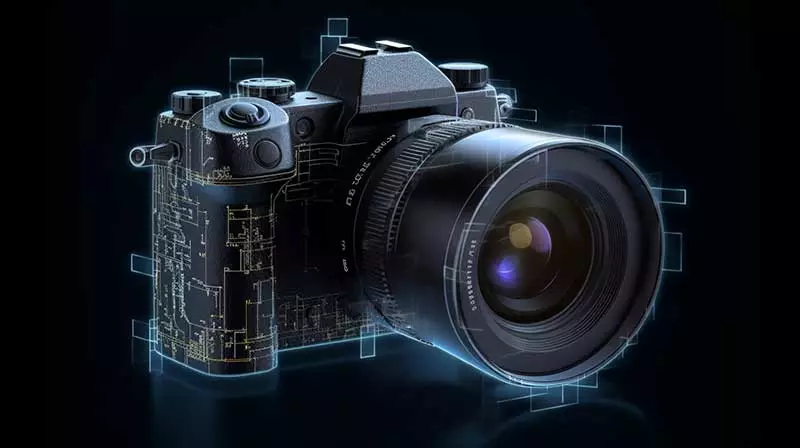
Advancements In AI-Driven Photography
AI Driven Digital Cameras and Sensors
AI driven digital cameras and sensors have revolutionized various industries by enhancing surveillance, automation and data collection processes. These advanced technologies combine artificial intelligence with cutting edge imaging and sensing capabilities. Enabling a wide range of applications in fields such as security, transportation, manufacturing and healthcare.
AI cameras possess advanced algorithms for real time analysis and interpretation of visual data. They automatically detect and track objects, recognize faces, identify anomalies and perform complex tasks like facial recognition and behavior analysis. These cameras are invaluable in security systems. They monitor crowded areas, detect suspicious activities and alert security personnel of potential threats. Moreover, they contribute to traffic management by monitoring congestion, detecting traffic violations and optimizing traffic flow.
In addition to cameras, the AI camera sensor plays a crucial role in collecting and processing data for various applications. Sensors integrated with AI algorithms capture and analyze data from diverse sources such as temperature, pressure, motion and sound. In manufacturing, AI driven sensors monitor equipment performance, detect abnormalities and predict maintenance needs. Consequently, enhancing efficiency while minimizing downtime. In healthcare, these sensors monitor vital signs, detect falls or assess patient movements to enhance patient care and safety.
One of the significant advantages of AI cameras and sensors is their ability to generate large volumes of data. It offers deeper analysis and practical usage, resulting in actionable insights. By leveraging machine learning algorithms, the collected data identifies patterns, trends and anomalies. This enables businesses to make informed decisions and optimize operations. This data driven approach enhances efficiency, productivity and resource allocation across various industries.
However, increased adoption of AI cameras and sensors raises concerns in society about privacy and security. Because these technologies gather sensitive information, ensuring appropriate data protection measures, ethical usage and compliance with regulations is crucial.
Intelligent Auto Modes And Scene Recognition
Intelligent auto modes and scene recognition in digital cameras and photography devices allow users to capture stunning images with ease and convenience. Leveraging AI and computational photography to automatically detect and analyze the scene, adjust camera settings and optimize image quality. Enabling both amateur and professional photographers to achieve outstanding results.
Using machine learning, intelligent auto modes analyze various scene elements, like lighting conditions, color balance, subject distance and composition. Assessing these factors, the camera sensor decides about exposure, shutter speed, aperture, focus and other parameters. Allowing the digital camera to produce well balanced and visually appealing photographs. Auto modes are helpful for beginners and point and shoot enthusiasts. They eliminate the need for manual adjustments and technical knowledge.
Scene recognition is another key component of intelligent auto modes. Digital cameras with extensive databases and deep learning models identify different types of scenes. Including landscapes, portraits, macro shots, night scenes and more. When the camera recognizes a specific scene, it automatically adjusts settings to optimize the image. For example, in landscape mode, the camera prioritizes a small aperture to achieve large depth of field. In portrait mode, it focuses on a wider aperture creating shallow depth of field blurring the background.
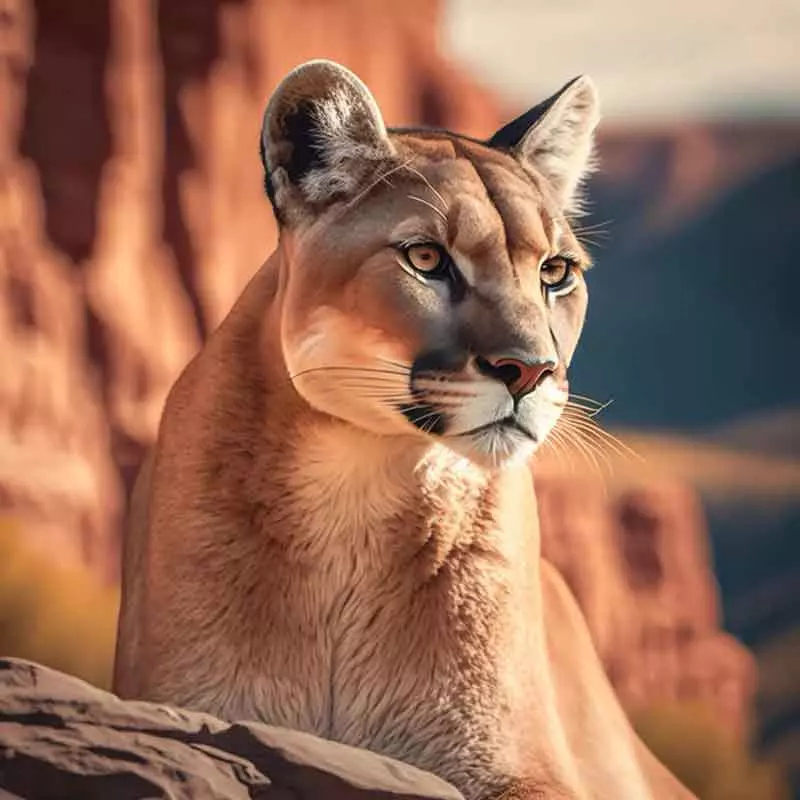
Intelligent auto modes and scene recognition capabilities simplify the photography creation process. Enabling users to capture impressive images in a variety of scenarios. Broadening photography’s appeal by simplifying technical settings, encouraging creativity.
However, intelligent auto modes and scene recognition aren’t infallible. They rely on pre-programmed algorithms and databases. Which may not accurately identify the captured scene or produce the desired results. Struggling in complex or unique situations beyond their recognition capabilities. Therefore, more experienced photographers may prefer manual control over their camera settings.
AI Based Composition Suggestions
AI based composition suggestions are a remarkable application of artificial intelligence in the field of computational photography. These innovative tools utilize computational photography to analyze and interpret visual data. Providing photographers with intelligent recommendations and guidance for improving image composition. By leveraging AI technology, photographers enhance their creative process, explore new perspectives and capture visually captivating photographs.
AI based composition suggestions work by examining various elements within an image, like lines, shapes, colors, symmetry and subject placement. Through machine learning, the AI system is trained on vast datasets of professionally composed photographs. Allowing recognition of patterns and compositions appealing to human observers. Using this knowledge, the AI system provides suggestions and guidelines to photographers, helping them compose their images.
These composition suggestions benefit beginners or photographers who seek inspiration. Receiving real time feedback and recommendations, photographers learn about fundamental compositional principles. Principles like the rule of thirds, leading lines, symmetry and balance. The AI system provides instant feedback on how to position the subject, adjust the framing or create a pleasing arrangement of elements within the frame.
Furthermore, AI based composition suggestions push the boundaries of photographer creativity offering alternative perspectives and unconventional compositions. Sometimes photographers become accustomed to certain patterns or approaches, resulting in repetitive or predictable compositions. AI analyzes vast amounts of visual data, identifies unique compositions and inspires photographers to experiment with different angles, vantage points or framing techniques they may not have considered.
It is important to note that AI based composition suggestions should be seen as tools to assist photographers, rather than replace their artistic judgment. Photographers still maintain the creative control and can choose to follow or deviate from the suggestions provided. Once again, the photographer’s vision and intention to create images should guide the composition choices.
In Conclusion
AI driven cameras and sensors have revolutionized various industries. enhancing surveillance, automation and data collection processes. They enable real time analysis, object detection, facial recognition and behavior analysis, contributing to security systems and traffic management. AI sensors collect and analyze data, optimizing manufacturing processes and improving healthcare outcomes.
The ability of AI cameras and sensors to generate large volumes of data allows for deeper analysis and informed decision making, enhancing efficiency and productivity across industries. However, concerns regarding privacy and security must be addressed. Intelligent auto modes and scene recognition simplify photography, adjusting camera settings to produce visually appealing images. AI based composition suggestions offer guidance to photographers, assisting in composing captivating and creative photographs. While AI tools are valuable, they should be seen as aids to support the photographer’s artistic judgment.
The Pros Of AI In Photography
Enhanced Automation And Efficiency
Thanks to AI, enhanced automation and efficiency in photography offers numerous benefits to photographers. AI powered systems streamline the image editing process, automating tasks like color correction, noise reduction and retouching. This not only saves time but also ensures consistent and high quality results. AI algorithms can analyze vast amounts of visual data. Therefore allowing photographers to quickly search and categorize their image libraries. This simplifies the image management process and enables easy retrieval of specific images. Furthermore, AI can assist in automating repetitive tasks such as image tagging and organizing, freeing up photographers to focus on creative aspects. Overall, AI enhances productivity, accuracy and workflow optimization in the realm of computational photography.
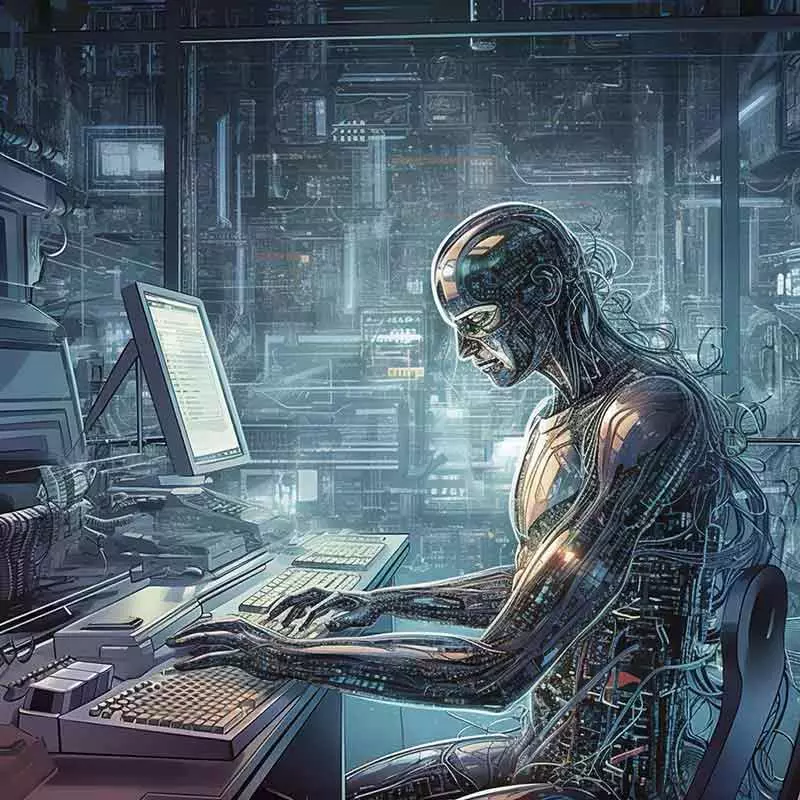
Improved Image Quality And Post Processing Capabilities
Improved image quality and post processing capabilities, facilitated by AI in photography, offer significant advantages to photographers. AI algorithms can analyze and enhance images by intelligently adjusting parameters like exposure, contrast and sharpness. This results in improved overall image quality, bringing out details and improving visual appeal. Additionally, AI powered de-noising techniques effectively reduce noise while preserving image details, leading to cleaner and crisper photos.
AI also enables advanced post processing capabilities, such as automated object removal or background replacement, which were previously time consuming or required extensive manual editing. This empowers photographers to achieve professional grade results with greater ease, saving time and expanding creative possibilities. Ultimately, AI enhances the final output and elevates the overall photographic experience.
Accessible And User Friendly Tools For Amateurs
AI in photography brings accessible and user friendly tools to amateurs, revolutionizing their experience and expanding their creative potential. With AI powered features, beginners can capture impressive photos effortlessly. Intelligent scene recognition automatically adjusts camera settings for optimal results, even in challenging lighting conditions. AI assisted composition suggestions help amateurs frame their shots effectively, enhancing their visual storytelling skills. Moreover, AI powered editing tools offer user friendly interfaces and automated enhancements, allowing amateurs to achieve professional looking results with minimal effort. AI algorithms also provide real time feedback, guiding users to improve their photography skills gradually. By democratizing photography, AI empowers amateurs to express their creativity and produce stunning images without requiring extensive technical knowledge.
Time Saving Benefits For Professionals
AI in photography offers significant time saving benefits for professionals, enhancing their workflow efficiency and productivity. AI powered automation tools accelerate repetitive and time consuming tasks. For instance, AI algorithms can quickly analyze and tag large volumes of images, simplifying the image organization and retrieval process. Furthermore, AI driven image editing tools automate complex post processing techniques like retouching, color grading and object removal. Consequently reducing the time spent on manual adjustments.
Professionals can also leverage AI powered image enhancement algorithms to achieve high quality results swiftly. Additionally, AI streamlines the culling process by identifying and prioritizing the best shots based on visual quality and composition. These time saving benefits allow professionals to focus more on creative aspects, client interactions and business growth. Ultimately improving their overall efficiency and productivity.
In Conclusion
Ethical concerns in AI generated content limit and challenge AI in photography. As AI algorithms generate content autonomously, questions arise regarding issues like copyright infringement, privacy violations and authenticity. AI may generate images that resemble copyrighted works or infringe upon someone’s privacy rights. Moreover, the potential for AI generated deep fakes and manipulated images raises concerns about misinformation and the erosion of trust. Ensuring ethical practices in AI generated content requires robust frameworks and guidelines, as well as ongoing monitoring and accountability. It is vital to strike a balance between the capabilities of AI and the ethical responsibilities to uphold integrity, consent and the rights of individuals within the field of photography.
The Role Of Human Creativity And Intuition
The Distinct Vision And Artistic Touch Of Photographers
The distinct vision and artistic touch of photographers play a vital role in the realm of computational photography and film. They compliment the role of human creativity and intuition. While AI technology continues to advance, it is the unique perspective and creative interpretation of photographers that infuse their work with emotion and narration. Human photographers possess the ability to envision a concept, select the perfect composition and capture the essence of a moment through their lens. Their intuition guides them to make artistic choices that AI algorithms may not replicate. The human touch adds an irreplaceable element to photography. It allows for the expression of individuality, imagination and a deeper connection between the viewer and the image.
Emotional Connection And Storytelling Through Photography
Photography’s emotional connection and storytelling rely on human creativity and intuition. While AI can analyze and process visual data, it often falls short in capturing the human experience and emotions. Photographers, through the lens, have the ability to evoke and convey emotions, telling compelling stories through their images. They intuitively capture poignant moments, unique perspectives, and subtle details for the narrative. Human photographers understand how to compose a shot to evoke a specific mood or to capture the essence of a subject. By infusing their work with their own emotions and perspectives, photographers create a powerful connection between the viewer and the image. Consequently fostering a deeper understanding and appreciation of the story being told.
Pushing The Boundaries Of Artistic Expression
Pushing the boundaries of artistic expression in photography is intricately linked to the role of human creativity and intuition. Human photographers possess a unique ability to think beyond conventional norms. They challenge established boundaries and explore new artistic territories. They experiment with composition, lighting, perspective and subject matter. All the while seeking innovative ways to convey their ideas and emotions. Through their intuition, they make instinctive decisions that lead to breakthroughs in artistic expression. Human creativity allows photographers to infuse their work with personal style, pushing the limits of visual storytelling and evoking powerful emotions. It is this innate ability to think outside the box and embrace artistic risks that propels photography as an art form and fuels its continuous evolution.
In Conclusion
The role of human creativity and intuition is paramount in photography, complementing the limitations of AI. The distinct vision and artistic touch of photographers infuse their work with emotion and narration, surpassing the capabilities of AI algorithms. Through their unique perspective, photographers capture the essence of a moment, making artistic choices that AI cannot replicate. Photography’s emotional connection and storytelling depend on human photographers’ ability to evoke and convey emotions, creating a powerful bond with the viewer. Furthermore, photographers push the boundaries of artistic expression, thinking beyond conventions and experimenting with innovative techniques. It is their innate creativity that propels photography as an evolving art form, perpetuating its rich and captivating narrative.
Limitations And Challenges Of AI In Photography
The Uncanny Valley: AI vs. Human Perception
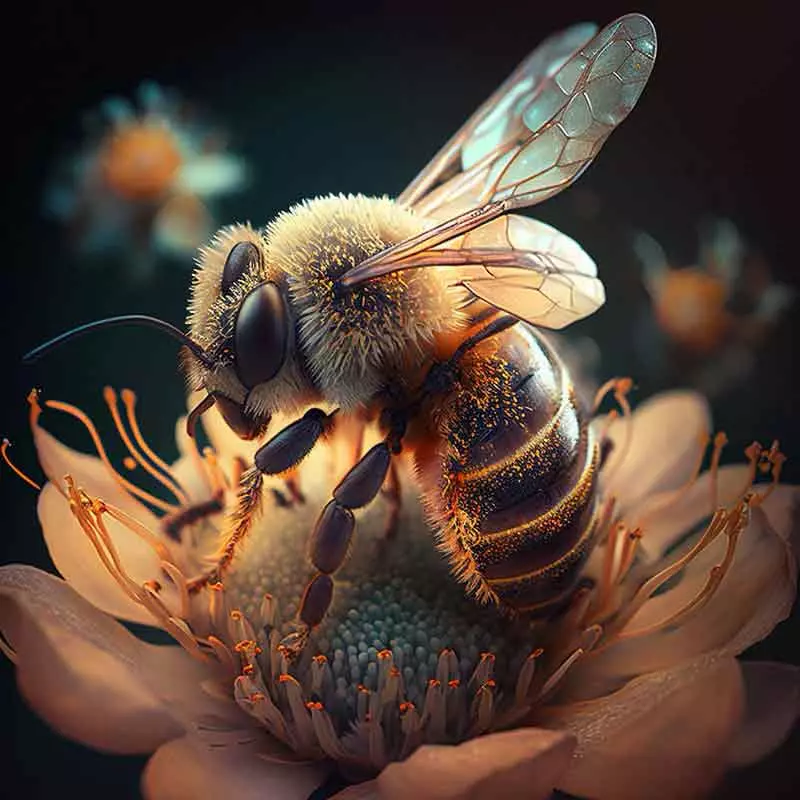
The uncanny valley is the discomfort experienced when encountering something almost human but falling short of complete realism. It is closely tied to the limitations and challenges of AI in photography. While AI algorithms can generate realistic images, they sometimes struggle to achieve the nuanced perception and emotional depth that human photographers can capture. AI may produce technically accurate results, but it often lacks the intuitive understanding and interpretive skills that humans possess. The uncanny valley highlights the challenge of bridging the gap between AI generated images and human perception. It underscores the importance of human involvement in photography to ensure genuine emotional connections and authentic artistic expression.
The Need For Training Data And Potential Biases
The need for training data and potential biases presents significant limitations and challenges for AI in photography. AI algorithms require large datasets to learn and make accurate predictions. However, the availability and quality of diverse and representative training data can be limited. Leading to potential biases in the AI’s understanding and interpretation of images. Biases can manifest in various forms, such as under representation of certain demographics or cultural biases in image recognition. Addressing these challenges requires careful curation of training datasets and ongoing monitoring to ensure fairness and inclusivity. Moreover, as photography evolves and new visual trends emerge, updating and expanding training data becomes crucial to maintain the relevance and effectiveness of AI algorithms in the dynamic field of photography.
The Struggle To Replicate Human Decision Making
The struggle to replicate human decision making represents a significant limitation and challenge for AI in photography. Human decision making in photography involves a complex interplay of creativity, intuition and contextual understanding. AI algorithms, while capable of analyzing vast amounts of data, struggle to replicate the nuanced and subjective nature of human decision making. The ability to recognize unique moments, capture emotions and make creative choices is deeply ingrained in human photographers. Replicating this level of artistic judgment and interpretation in AI systems remains a challenge. As a result, AI may produce technically proficient images but may lack the emotional depth and creative vision that human photographers bring to their work, highlighting the ongoing need for human involvement in the field of photography.
Ethical Considerations In AI Generated Content
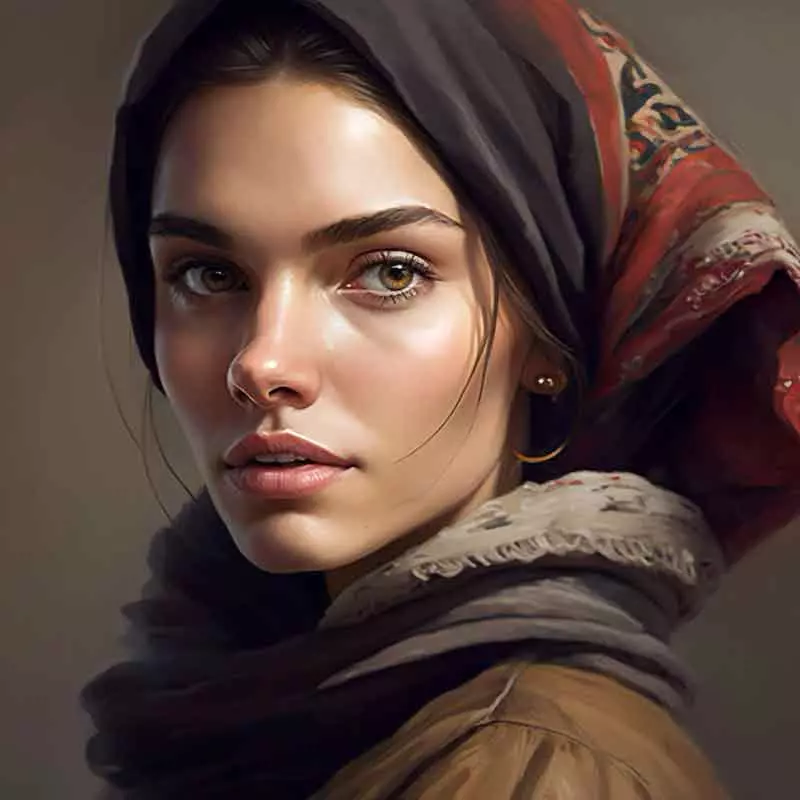
Ethical considerations in AI generated content present significant limitations and challenges for AI in photography. As AI algorithms generate content autonomously, questions arise regarding issues like copyright infringement, privacy violations and authenticity. AI may generate images that resemble copyrighted works or infringe upon someone’s privacy rights. Moreover, the potential for AI generated deepfakes and manipulated images raises concerns about misinformation and the erosion of trust. Ensuring ethical practices in AI generated content requires robust frameworks and guidelines, as well as ongoing monitoring and accountability. It is vital to strike a balance between the capabilities of AI and the ethical responsibilities to uphold integrity, consent and the rights of individuals within the field of photography.
In Conclusion
The limitations and challenges of AI in photography are evident in various aspects. The uncanny valley highlights the difficulty in bridging the gap between AI generated images and human perception. This underscores the importance of human involvement for emotional connections and authentic expression. The need for diverse and representative training data poses challenges, as biases can emerge, necessitating careful curation and ongoing monitoring.
Replicating human decision making remains a struggle for AI, as it fails to capture the nuanced and subjective nature of artistic judgment. Additionally, ethical considerations arise, such as copyright infringement, privacy violations and trust concerns. Maintaining ethical practices requires robust frameworks and accountability. Balancing AI capabilities with ethical responsibilities is crucial in the evolving field of photography.
Coexistence And Collaboration: Humans And AI In Photography
The Symbiotic Relationship Between AI And Photographers
The essential connection between AI and photographers forms the foundation for their collaborative existence in photography. AI technology augments the creative process and capabilities of photographers, empowering them to push the boundaries of their craft. AI assists in automating mundane tasks, providing intelligent suggestions and enhancing image quality. It acts as a valuable tool, leveraging computational power and vast datasets to optimize efficiency and expand creative possibilities. Conversely, photographers contribute their distinct vision, artistic intuition and emotional connection to the craft. The collaboration between humans and AI in computational photography cultivates a harmonious partnership, where new technology enhances human creativity while honoring the irreplaceable role of human insight and expression.
Complementary Roles: AI As A Creative Tool
Complementary roles in the coexistence and collaboration between humans and AI in photography manifest in AI’s role as a creative tool. AI serves as a powerful ally, offering innovative capabilities that enhance and amplify human creativity. AI algorithms analyze vast amounts of data, identify patterns and generate unique insights that fuel inspiration for photographers. It assists in automating tasks, freeing up time for artists to focus on their vision and storytelling. By leveraging AI as a creative tool, photographers can experiment with new styles, explore unconventional perspectives and unleash their artistic potential. Harmonious coexistence between humans and AI unlocks infinite possibilities, with technology as a catalyst for creativity in photography.
Embracing AI To Enhance Artistic Vision And Efficiency
The integration of AI for artistic vision and efficiency is a pivotal aspect of human AI coexistence in photography. By embracing AI technology, photographers can harness its capabilities to augment their artistic vision and achieve greater efficiency in their workflow. AI algorithms can analyze data, offer intelligent suggestions and automate routine tasks. Consequently freeing up valuable time for photographers to focus on their creative process. Through this collaboration, photographers can explore new artistic possibilities, experiment with unique styles and expand the boundaries of their work. The symbiotic relationship between humans and AI in photography empowers artists to elevate their artistic vision while leveraging the efficiency and innovation offered by AI technology.
In Conclusion
The coexistence and collaboration between humans and AI in photography is characterized by a symbiotic relationship. AI technology acts as a powerful tool, enhancing the creative process and capabilities of photographers. It automates tasks, provides intelligent suggestions and improves image quality while optimizing efficiency and expanding creative possibilities. This complementary role of AI as a creative tool empowers photographers to experiment, explore new styles and unleash their artistic potential. Embracing AI in photography enhances both artistic vision and efficiency. Which allows photographers to push the boundaries of their craft while leveraging the benefits of AI technology. The harmonious integration of humans and AI paves the way for endless artistic innovation and collaboration in the field of photography.
The Future Landscape of Photography
AI’s Impact On Different Photography Genres
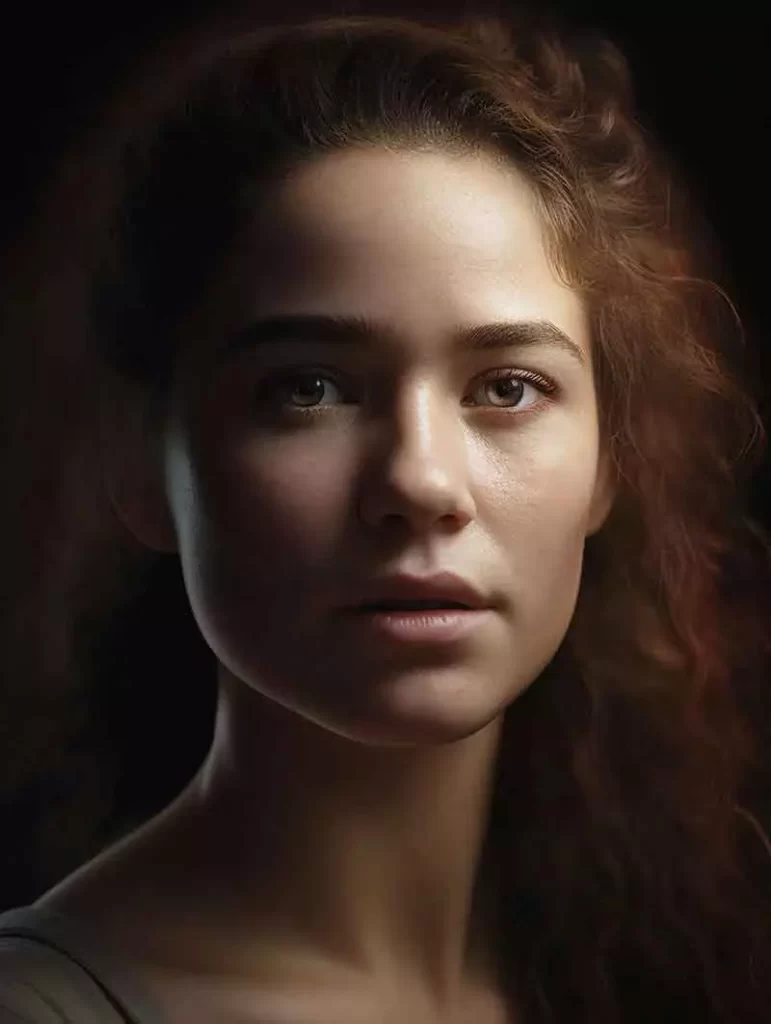
AI’s impact on different photography genres will play a crucial role in shaping the future landscape of photography. With AI algorithms becoming increasingly sophisticated, they can adapt to specific genres and cater to unique artistic requirements. In portrait photography, AI can assist in facial recognition, emotion detection and automated retouching, offering efficient workflows and enhancing the final results. Landscape photographers can leverage AI for intelligent scene recognition, optimizing settings for different environments and capturing breathtaking compositions. Street photographers can benefit from AI’s real time analysis, helping them anticipate and capture decisive moments with precision. The future of photography will witness AI seamlessly integrating into various genres, empowering photographers with advanced tools and capabilities for unparalleled artistic expression.
Emerging Trends And Innovative Applications
Emerging trends and innovative applications are catalysts for shaping the future landscape of photography. Advancements in technology redefine the way we capture, process and share images, unveiling new possibilities. Computational photography, virtual reality and augmented reality trends offer immersive and interactive visuals. Innovations like AI drones, 360 cameras and multi-sensor systems push creative and storytelling boundaries. Combining traditional techniques and cutting edge technology, the future of photography offers unique perspectives and limitless expressive possibilities. As trends evolve, photographers adapt to a changing landscape, pushing boundaries and captivating audiences with groundbreaking imagery.

AI’s Role In Democratizing Photography
AI’s role in democratizing photography is a driving force shaping the future landscape of this art form. As AI technology continues to advance, it becomes more accessible and user friendly, allowing individuals from diverse backgrounds to engage in photography. AI powered features like intelligent auto modes, automatic editing tools, and composition suggestions empower beginners to capture impressive photos effortlessly. Furthermore, AI enables easier image organization, content based search and personalized recommendations. Thereby enhancing the overall photography experience for enthusiasts and professionals alike. By breaking down technical barriers and providing intuitive tools, AI democratizes photography, fostering creativity and expanding participation in the field. The future will witness an increasingly inclusive and diverse community of photographers, driven by the democratizing influence of AI technology.
In Conclusion
The future landscape of photography is shaped by the impact of AI across different genres, emerging trends and its role in democratization. AI’s increasing sophistication allows it to adapt to specific genres, offering assistance in areas such as facial recognition, scene optimization and real time analysis. These advancements empower photographers with advanced tools for unparalleled artistic expression.
Meanwhile, emerging trends like computational photography and augmented reality push the boundaries of visual experiences, opening new creative possibilities. Furthermore, AI’s role in democratizing photography breaks down barriers, making it more accessible and inclusive for individuals of diverse backgrounds. The future holds a dynamic and diverse community of photographers, driven by AI’s transformative influence in shaping the landscape of this art form.
Case Studies: AI In The Photography Industry
Image Recognition In Stock Photography Driven By AI
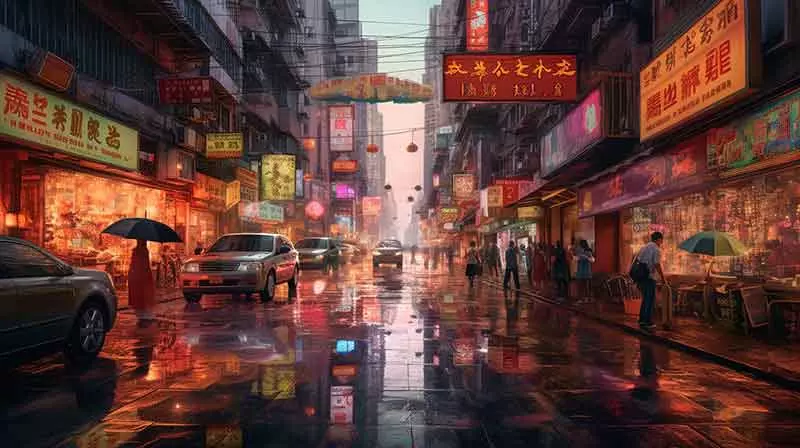
Image recognition driven by AI, plays a significant role in stock photography, as demonstrated by case studies within the industry. By employing advanced algorithms and deep learning models, AI can efficiently analyze and categorize vast collections of images. This enhances the search and discovery process for stock photographers, agencies and buyers, allowing them to quickly find relevant visuals. AI powered image recognition systems can automatically tag and label images based on their content, saving time and effort. Moreover, AI’s ability to recognize objects, scenes and even emotions within images enables more accurate and targeted image search results. This improves the overall efficiency, organization and accessibility of stock photography libraries. Thus benefiting both content creators and users.
Automated Curation And Organization In Photo Libraries
Automated curation and organization in photo libraries have emerged as powerful applications of AI in the photography industry, as demonstrated by compelling case studies. AI algorithms excel in analyzing vast quantities of visual data, allowing for efficient categorization and tagging of images. This automated process enhances the management of photo libraries, enabling photographers and agencies to quickly locate specific images based on desired criteria. AI driven systems can identify key elements, such as objects, faces and locations, facilitating precise organization and effortless retrieval. These case studies showcase the time saving benefits, improved workflow efficiency and enhanced accessibility that AI brings to the photography industry. Consequently revolutionizing how photographers curate and manage their extensive collections.
AI Powered Image Restoration And Enhancement
Artificial Intelligence powered image restoration and enhancement have revolutionized the photography industry. By leveraging sophisticated algorithms and deep learning models, AI can intelligently restore and enhance damaged or low quality images. These technologies can automatically remove noise, improve sharpness, adjust exposure and even reconstruct missing details. Case studies highlight the significant improvements in image quality and the restoration of valuable historical photographs, preserving them for future generations. AI powered image enhancement also allows photographers to optimize the visual appeal of their images, achieving professional level results with ease. These case studies demonstrate the transformative impact of AI in image restoration and enhancement, elevating the overall quality and value of photography in the industry.
In Conclusion
Case studies presented in the photography industry highlight the significant contributions of AI in various areas. AI driven image recognition in stock photography enhances search capabilities, enabling efficient categorization and accurate tagging of images. This benefits content creators and users alike, streamlining the discovery process. Automated curation and organization in photo libraries revolutionize workflow efficiency, offering precise image retrieval and effortless management. AI powered image restoration and enhancement techniques restore damaged or low quality images, preserving historical photographs and optimizing visual appeal. These case studies demonstrate the transformative impact of Artificial Intelligence in the photography industry, enhancing accessibility, efficiency and overall image quality. AI continues to shape the industry’s future, offering innovative solutions and expanding creative possibilities.
Perspectives From Professional Photographers
Insights From Professional Photographers On AI’s Influence
Insights from renowned photographers on AI’s influence shed light on the perspectives of professionals in the field. Many acknowledge the significant impact AI has had on the industry, offering new possibilities and streamlining workflows. Some photographers embrace AI as a valuable tool that enhances their creative process and expands their artistic vision. They appreciate AI’s ability to automate repetitive tasks, provide intelligent suggestions and optimize image quality. However, others caution against over reliance on AI, emphasizing the importance of preserving human creativity, intuition and unique perspectives. These insights highlight the nuanced views of professional photographers and the ongoing exploration of AI’s role in shaping the future of photography.
Balancing Technological Advancements With Artistic Integrity
Balancing technological advancements with artistic integrity is a paramount consideration for professional photographers. While technological innovations like AI offer exciting possibilities, photographers emphasize the importance of preserving their creative vision and maintaining artistic integrity. They recognize that technology should serve as a tool rather than dominate the creative process. Striking a balance involves leveraging technological advancements to enhance efficiency, expand creative possibilities and achieve desired outcomes while staying true to their artistic expression. Professional photographers believe in balancing technology with emotional depth, storytelling and unique perspectives in their distinctive work. Ensuring that their art remains a reflection of their vision and creativity.
Leveraging AI To Streamline Workflows And Expand Creative Possibilities
Professional photographers recognize the immense value of leveraging AI to streamline workflows and expand creative possibilities. They appreciate how AI powered tools and algorithms can automate time consuming tasks like image sorting, tagging and post processing, freeing up more time for the actual creative process. By reducing manual labor, photographers can focus on their artistic vision, experimenting with new styles and techniques. Artificial Intelligence also offers innovative features like intelligent composition suggestions and advanced image enhancement. Which enables photographers to push their creative boundaries. Professional photographers view AI as a powerful ally, providing them with efficient tools that enhance their workflow and amplify their artistic expression, ultimately elevating the quality of their work.
In Conclusion
The perspectives of professional photographers on AI’s influence reveal a diverse range of opinions within the industry. While some rely on AI to expand their artistic vision, others prioritize human creativity and unique perspectives. The key lies in balancing technological advancements with artistic integrity, using AI as a tool to streamline workflows and expand creative possibilities. And doing it without overshadowing the photographer’s vision. Leveraging AI tools, professional photographers automate tasks, enhance image quality and expand artistic expression. Ultimately, AI empowers photographers to achieve higher levels of efficiency and artistic excellence in their work.
Addressing Concerns And Skepticism Regarding AI And Photography
Job Displacement Fears Among Photographers
Job displacement fears among photographers have emerged as a valid concern in the wake of AI’s advancements in photography. As AI technology becomes more sophisticated, there is apprehension that it may replace human photographers in certain areas. However, it’s crucial to address these concerns and skepticism by recognizing the irreplaceable role of human creativity, artistic vision and emotional connection in photography. While AI can automate certain tasks, it cannot replicate the nuanced decision making, storytelling abilities and subjective interpretation that photographers bring to their work. By embracing AI, photographers can enhance their craft, collaborate and grow professionally, opening new creative avenues.
The Importance Of Adaptability And Continuous Learning
The importance of adaptability and continuous learning is instrumental in addressing concerns and skepticism regarding AI and photography. Evolving AI technology sparks industry concerns about its impact. By embracing adaptability, photographers can proactively navigate this changing landscape and leverage AI as a valuable tool. Continuous learning helps them understand the capabilities and limitations of AI, enabling informed decision-making. By staying updated with the latest developments, photographers can address concerns and skepticism more effectively, ensuring they remain at the forefront of their craft. Embracing adaptability and continuous learning allows photographers to harness the benefits of AI while maintaining artistic integrity and preserving the unique human touch in their work.
The Future Of Professional Photography Careers
The future of professional photography careers is a subject of concern and skepticism amid the advancements of AI in the field. While AI technology offers automation and efficiency, it is important to approach this evolution with a balanced perspective. Professional photographers can adapt and leverage Artificial Intelligence as a valuable tool rather than viewing it as a threat. By embracing AI and continuously honing their artistic skills, photographers can differentiate themselves through their unique creative vision, emotional storytelling and personalized client interactions. The human element in photography, with its capacity for intuition, empathy and subjective interpretation, remains indispensable. Embracing AI while maintaining their core strengths, professional photographers can navigate the future landscape and thrive in their careers.
In Conclusion
Addressing concerns and skepticism regarding AI and photography requires a balanced approach that recognizes the unique contributions of human photographers. Despite valid job displacement fears, emphasizing human creativity’s irreplaceable role in photography is vital. Adaptability and continuous learning are key in navigating the evolving landscape, allowing photographers to leverage AI as a valuable tool while maintaining their artistic integrity. By embracing AI and staying at the forefront of their craft, professional photographers can differentiate themselves and thrive in their careers. The future of professional photography lies in striking a harmonious balance between AI technology and the human touch.
The Ethical Implications Of Artificial Intelligence In Photography
Ownership And Copyright Issues With AI Generated Content
Ownership and copyright issues with AI generated content are pressing ethical concerns in the realm of AI in photography. As AI algorithms generate content autonomously, questions arise about who owns the rights to the AI generated images. The traditional framework of copyright law struggles to keep pace with these advancements, leading to ambiguity and potential infringement. Additionally, AI generated deep fakes and manipulated images raise concerns about misrepresentation, consent and the erosion of trust. Addressing these issues requires the development of robust legal frameworks, ethical guidelines and clear attribution mechanisms to protect the rights of photographers, subjects and consumers. It is essential to navigate the ethical landscape carefully, ensuring the responsible and transparent use of AI in photography to safeguard intellectual property and maintain ethical standards.
Transparency And Disclosure In Artificial Intelligence Altered Images
Transparency and disclosure in AI altered images are crucial ethical considerations in the context of AI in photography. With the increasing sophistication of AI algorithms, it becomes imperative to clearly disclose when an image has been significantly altered or manipulated using AI. This transparency ensures that viewers are aware of the extent of digital alterations and can make informed judgments about the authenticity and credibility of the image. Establishing clear guidelines and standards for disclosure helps maintain trust between photographers and their audiences. By embracing transparency and openly acknowledging the role of Artificial Intelligence in image alterations, ethical standards can be upheld, promoting integrity and responsible use of AI technology in photography.
Impacts On Privacy And Surveillance
The ethical implications of Artificial Intelligence in photography extend to its impacts on privacy and surveillance. The increasing use of AI powered cameras and facial recognition technologies raises concerns about the invasion of privacy and potential misuse of personal data. AI’s ability to analyze pictures and identify individuals without their consent poses risks to privacy rights. Furthermore, the widespread deployment of AI surveillance systems raises questions about the balance between security and individual freedoms. The right balance requires robust regulations, transparent data collection and ethical AI use. Safeguarding privacy rights is paramount in the ethical adoption of AI in photography.
In Conclusion
The ethical implications of artificial intelligence in photography highlight the need for careful consideration and responsible practices. Ownership and copyright issues surrounding AI generated content necessitate the development of clear legal frameworks and ethical guidelines to protect the rights of photographers, subjects and consumers. Transparency and disclosure in AI altered images are vital to maintain authenticity and credibility. This ensures viewers can make informed judgments about the image’s integrity. The impacts of AI on privacy and surveillance call for robust regulations and ethical use to strike a balance between security and individual freedoms. By navigating these ethical concerns, the responsible adoption of AI in photography can uphold integrity, protect privacy rights and maintain ethical standards.
Artificial Intelligence As A Tool For Learning And Skill Development
AI Driven Tutorials And Training Platforms
AI driven platforms are essential for harnessing AI’s potential in learning and skill development. These platforms leverage AI algorithms to provide personalized and adaptive learning experiences to users. AI analyzes individual strengths, weaknesses and learning patterns to deliver targeted guidance and feedback. Through interactive tutorials, virtual mentors and simulated environments, AI empowers learners to acquire new skills and enhance their expertise. The integration of AI in learning platforms enables self paced, customized learning journeys. These journeys foster continuous improvement and knowledge acquisition. With AI as a learning tool, individuals unlock potential, acquire skills, and navigate personal and professional development.
Augmented Reality (AR) And Virtual Reality (VR) In Photography Education
AI’s integration as a learning and skill development tool is exemplified through Augmented Reality and Virtual Reality in photography education. These technologies enable learners to experience virtual environments that replicate real world photography scenarios, allowing them to practice and refine their skills in a safe and interactive manner. AI algorithms enhance this experience by providing real time feedback, guidance and analysis of the learner’s performance. By merging AI capabilities with AR and VR, photography education becomes more engaging, dynamic and effective. Learners can explore different techniques, experiment with composition and receive personalized instruction. Which accelerates their learning curve and enables them to develop their photography skills to their full potential.
Leveraging AI To Accelerate Skill Acquisition
Leveraging AI to accelerate skill acquisition is a key aspect of utilizing artificial intelligence as a tool for learning and skill development. AI algorithms can analyze vast amounts of data, identify patterns and provide personalized feedback and guidance to learners. By leveraging AI driven platforms, individuals can benefit from adaptive learning experiences tailored to their specific needs and learning pace. AI can identify areas of improvement, suggest targeted resources and offer real time support, optimizing the learning process. Through intelligent assessment and continuous monitoring, AI facilitates faster skill acquisition. This allows learners to progress efficiently and effectively. Artificial intelligence empowers individuals to maximize their learning potential and achieve rapid skill development in various domains.
In Conclusion
Artificial intelligence as a tool for learning and skill development holds immense potential in transforming educational experiences. AI driven tutorials and training platforms provide personalized and adaptive learning journeys, enabling individuals to acquire new skills and enhance their expertise. Augmented Reality and Virtual Reality offer immersive environments for learners to practice and refine their skills. While AI algorithms provide real time feedback and guidance. Moreover, leveraging AI accelerates skill acquisition by analyzing data, offering personalized support and optimizing the learning process. Overall, AI empowers individuals to unlock their learning potential, navigate personal and professional development and achieve rapid skill development in various domains.
Innovations In AI Photography: Beyond Traditional Boundaries
AI Powered Aerial And Underwater Photography
AI powered aerial and underwater photography exemplify the innovations in AI photography that transcend traditional boundaries. With advancements in technology, AI algorithms enable drones and underwater robots to capture stunning images in environments previously inaccessible to photographers. AI algorithms analyze the visual data in real time, optimizing camera settings and enhancing image quality. These applications of AI in aerial and underwater photography expand the creative possibilities and offer unique perspectives. The integration of AI in these domains revolutionizes the way we capture and experience images, pushing the boundaries of traditional photography. It showcases the transformative power of AI in enabling new forms of artistic expression and visual storytelling.
Mixed Reality (MR) And AI Integration In Photography
The integration of Mixed Reality (MR) and AI in photography represents an innovative leap in AI photography that transcends traditional boundaries. By combining virtual elements with the real world, MR enhances the photographic experience and opens up new creative possibilities. AI algorithms play a crucial role in MR photography by analyzing and interpreting real time data. Then seamlessly integrating virtual elements into the scene. This integration allows photographers to capture captivating images that blend reality and imagination, transforming the way stories are told visually. The fusion of MR and AI expands the boundaries of traditional photography. Enabling artists to create immersive and interactive narratives that push the limits of visual storytelling.
Virtual Photography And AI Generated Environments
Virtual photography and AI generated environments showcase the innovative advancements in AI photography, pushing beyond traditional boundaries. With AI algorithms, virtual photography enables photographers to capture stunning images within digitally created worlds and environments. AI generates realistic landscapes, architectural structures and even entire cities, offering limitless creative possibilities. Photographers explore and capture scenes beyond the physical realm, expanding imagination and storytelling boundaries. The integration of AI in virtual photography enhances the level of realism, detail and immersion, transforming the way photographers conceptualize and capture images. It opens up a new realm of artistic expression, where the boundaries of traditional photography are surpassed and virtual worlds become the canvas for visual storytelling.
In Conclusion
Innovations in AI photography have extended beyond traditional boundaries, enabling new forms of artistic expression and visual storytelling. AI powered aerial and underwater photography has revolutionized the way we capture images in previously inaccessible environments. Consequently pushing the limits of creativity and offering unique perspectives.
The integration of Mixed Reality and AI has transformed photography by blending virtual elements with the real world, creating immersive and interactive narratives. Virtual photography and AI generated environments have opened up limitless creative possibilities, allowing photographers to capture stunning images within digitally created worlds. The transformative power of AI is showcased in boundary pushing digital photography advancements, redefining visual narratives.
Conclusion: A Collaborative Future Of Photography And AI
AI As A Catalyst For Innovation And Creativity In Photography
AI as a catalyst for innovation and creativity in photography is central to the collaborative future of photography and AI. The integration of AI algorithms and technology in photography has sparked groundbreaking advancements and expanded the possibilities for photographers. AI enhances workflow efficiency, automates tasks and empowers photographers to explore new artistic territories. It offers tools for image enhancement, composition suggestions and real time feedback. The future of photography and AI envisions a symbiotic relationship, with AI amplifying human creativity and vision. Together, photography and AI will continue to shape a dynamic and exciting landscape of innovation and artistic expression.
Embracing The Possibilities Of AI While Preserving Human Artistry
Embracing the possibilities of AI while preserving human artistry is integral to the collaborative future of photography and AI. The advancements in AI technology offer powerful tools that enhance efficiency, automate processes and expand creative possibilities. However, it is essential to recognize that human artistry and intuition bring a unique perspective and emotional depth to photography. By leveraging AI as a supportive tool rather than a replacement, photographers can maintain their individuality and creative vision. The collaborative future of photography and AI embraces the synergistic relationship between technology and human creativity. AI empowers photographers for innovative visual storytelling.
The Transformative Potential Of AI Empowered Photographers
The transformative potential of AI empowered photographers is a key aspect of the collaborative future of photography and AI. AI technology equips photographers with powerful tools and capabilities that enhance their creative process, efficiency and artistic output. By leveraging AI algorithms, photographers can push the boundaries of their craft, exploring new techniques, styles and perspectives. AI enables them to streamline their workflow, automate mundane tasks and focus more on the artistic aspects of photography. Collaborative efforts of photographers and AI enhance creative vision for captivating imagery. Together, they shape a collaborative future where AI empowers photographers to unlock their full potential and achieve new heights in their artistic endeavors.
Summary Of The Future of Photography in the Age of Artificial Intelligence
I want to thank you if you’ve stuck it out for the whole article. It was a long read for sure. I did my best to present my research in a way that everyone could understand. Keep in mind this is my take on Artificial Intelligence and how it will affect photography.
Hopefully some of you will provide your take or disagreements with my research in the comments below. I find AI both exciting and concerning not just for photography but everything in life. The future is definitely changing faster now with the advent of AI. There are people on both sides of the coin for AI and it has become controversial quickly. I don’t see it going away anytime soon so we must strive to understand it and direct it properly for humanity.
Please be professional and courteous in your comments below otherwise I will remove them. No one likes a bully or arrogance in any form. You are entitled to your opinion so be respectful of others also. Once again thank you for taking time to provide your input and perspective on the future of AI and photography. Hope you enjoyed the read.
